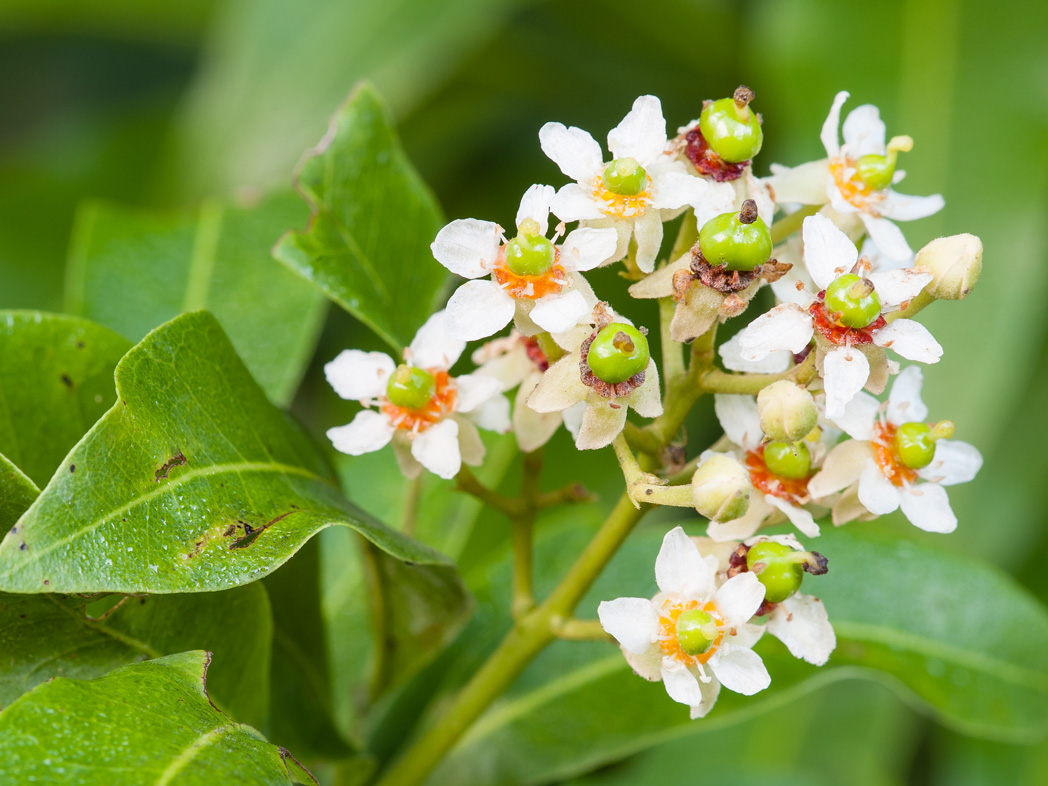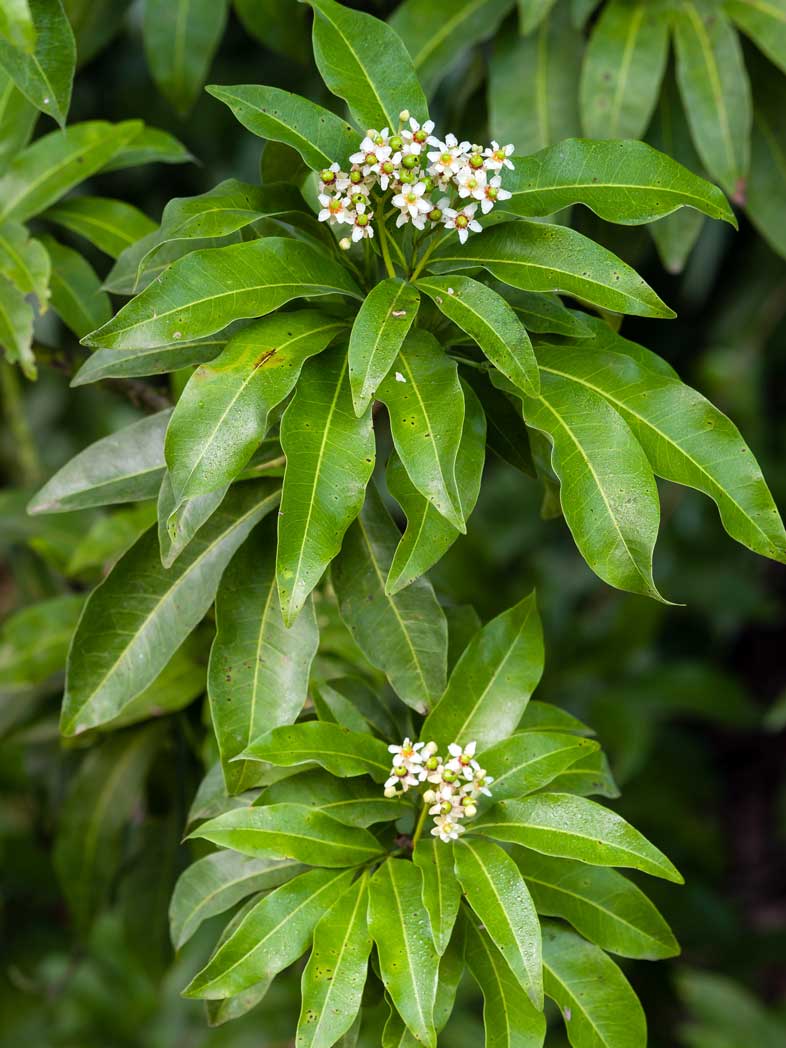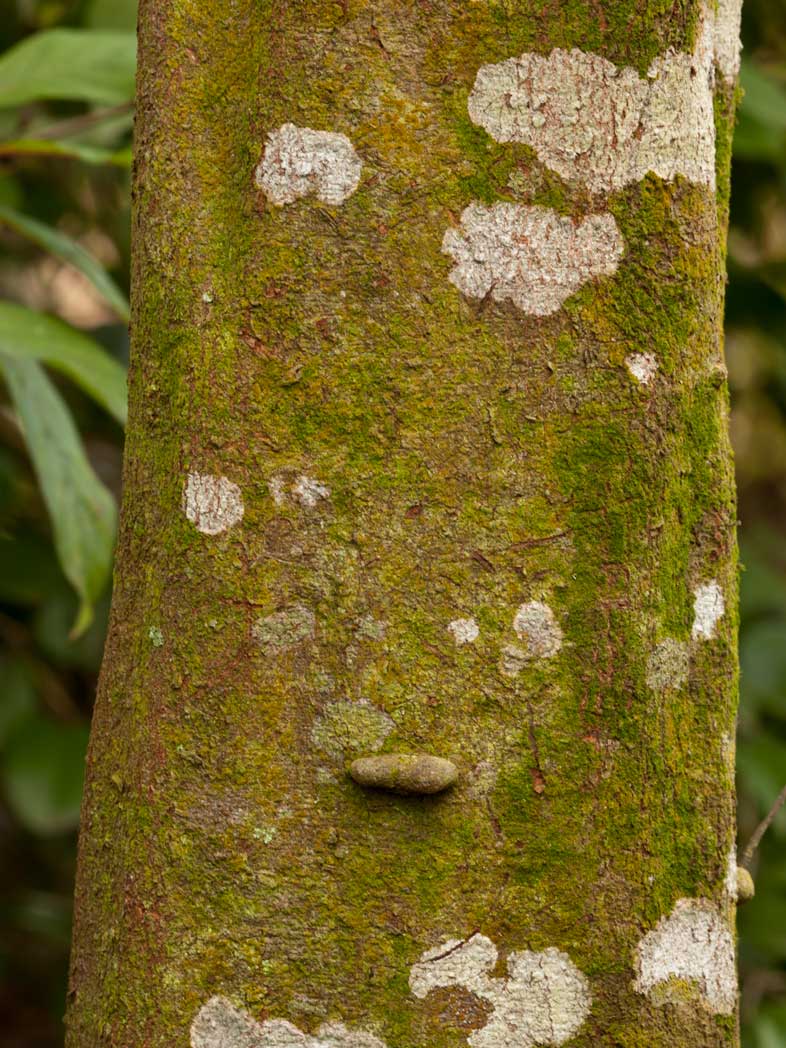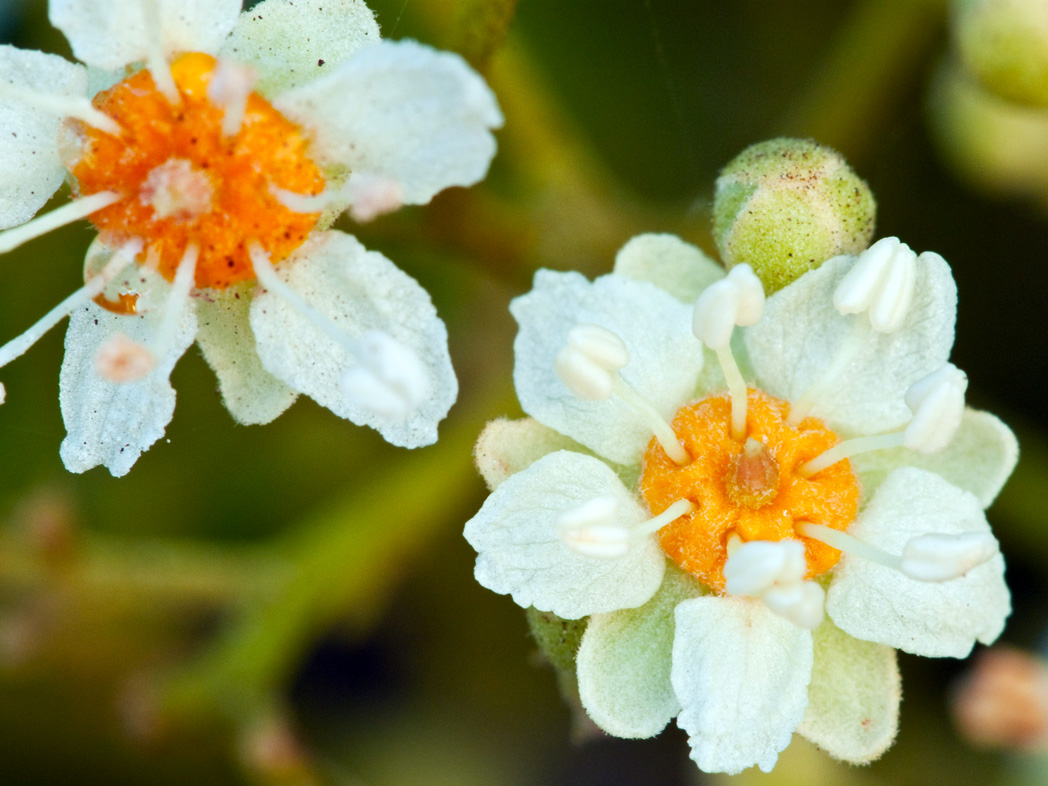Inkwood
Pictured above: Inkwood (Exothea paniculata) by Keith Bradley. Click on terms for botanical definitions. View post as a PDF.
Inkwood (Exothea paniculata) occurs naturally in coastal hammocks, rocklands and shell mounds in coastal Central and South Florida. It is an excellent ornamental option for residential and commercial landscapes. Its dense, evergreen foliage is attractive year-round and offers cover for birds and other wildlife. Its fragrant flowers bloom late winter into summer, peaking in spring. They attract a variety of pollinators. The abundant fruit (produced on female trees) provides a tasty treat for birds in late spring and summer.

Inkwood’s small but showy flowers have five white petals with undulating margins. They are born in terminal or axillary clusters. Female flowers have obvious superior ovaries. They are yellowish-green and develop into orange berries that turn dark purple when ripe. Leaves are pinnately compound and alternately arranged. Each has two to six (typically four) leaflets that are dark green, glossy and oblong to elliptic. Leaflet margins are entire ; apices may be notched or rounded. Branches are upright. Bark is reddish-brown, thin and mottled. It can become scaly with age. The crown is dense and rounded.


The common name Inkwood may refer to the historical use of its dark berry juice as an ink. Other accounts reference the tree’s dark sap as the source of its name. The tree is sometimes referred to as Ironwood, referencing its strong and sturdy wood. (Not to be confused with Ironwood (Krugiodendron ferreum), which is also named for its dense, strong wood.)
Family: Sapindaceae (Soapberry family)
Native range: Coastal counties from Volusia south to Miami-Dade on the east into the Keys, and Collier and Monroe counties on the west
To see where natural populations of Inkwood have been vouchered, visit florida.plantatlas.usf.edu.
Hardiness: Zones 9B–11
Soil: Moist, well-drained loamy, sandy or calcareous soils
Exposure: Full sun to partial shade
Growth habit: 25–35’ tall (up to 45’ tall in South Florida)
Propagation: Seed (may be difficult to propagate), transplantation of self-sown seedlings
Garden tips: Inkwood is adaptable to varying conditions. It is moderately tolerant of drought and salt spray exposure. It does not tolerate saltwater inundation. It is best used as a specimen or accent tree, but multiple plants may be used to create a border. Immature plants are often bushy. When fully grow, the plant makes an excellent shade tree. Inkwood is dioecious, which means both a male and female specimen are needed to ensure pollination and fruit. Fruits are produced only on female plants.
Plants are occasionally available from nurseries that specialize in Florida native plants. Visit www.plantrealflorida.org to find a nursery in your area.

